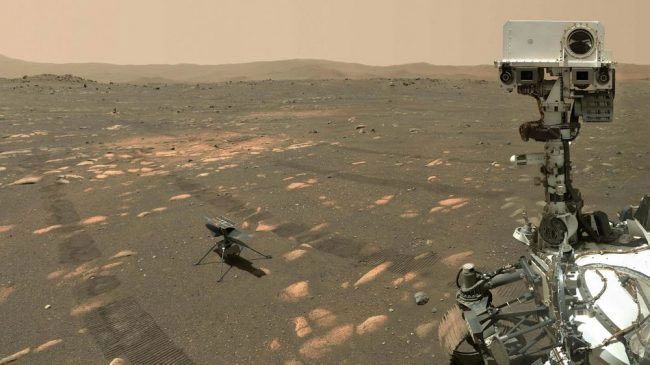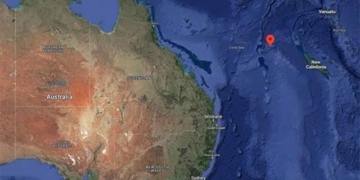According to the National Aeronautics and Space Administration (NASA) of the United States, the Perseverance rover has marked its 1,000th day of operation on the “Red Planet.”

Image of the Mars helicopter Ingenuity (left) captured by the Perseverance rover’s camera (right) on April 6, 2021. (Photo: AFP/TTXVN)
A day on Mars lasts 24 hours and 37 minutes, which is nearly 40 minutes longer than a day on Earth. On February 18, 2021, the Perseverance rover, accompanied by its robotic partner – the Ingenuity helicopter – landed on Mars at the Jezero Crater. Since then, this car-sized rover has been on a mission to search for signs of ancient life on Mars.
According to NASA, recently, the Perseverance rover completed an exploration of an ancient river delta that holds evidence of a lake that flowed into the Jezero Crater billions of years ago. To date, the six-wheeled Perseverance rover has collected a total of 23 samples, revealing the geological history of this region on Mars.
Scientist Ken Farley from the Perseverance project at the California Institute of Technology explains why researchers chose the Jezero Crater as the landing site. Orbital images show that the delta region is clear evidence that a large lake once filled the crater. This lake could have been a potential habitat, while the rocky plains provide ideal environments hiding signs of ancient life, such as fossils.
The key objective of the Perseverance mission on Mars is to study life in the universe, including the search for signs of ancient microorganisms. According to NASA, this rover will investigate the geological and climatic history of Mars, helping humanity decode the “Red Planet.” This mission is the first to collect and store rock and soil samples from Mars.
On the same day, NASA announced plans to launch a new Earth observation system into orbit to study oceans and clouds. Specifically, the mission named PACE is set to be launched from Cape Canaveral Space Force Station in Florida after February 6, 2024. The data collected will help NASA understand how the oceans and atmosphere exchange CO2, measure important atmospheric variables related to air quality and Earth’s climate, and monitor the status of the oceans.


















































